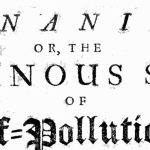Historically, leather harnesses were utilitarian, used in ancient civilizations for military purposes and animal control. Over time, these functional items evolved into decorative garments, with knights and noblemen in the Middle Ages donning elaborate leather harnesses as symbols of status and wealth.
In the mid-20th century, particularly after World War II, the leather harness was adopted by the emerging gay leather subculture. Many servicemen, returning from the war, found it challenging to reintegrate into mainstream society and gravitated towards motorcycle clubs, embracing leather attire as a symbol of masculinity and rebellion. This period also saw the influence of Japanese bondage techniques, introduced through kabuki theatre, which featured rope ties resembling modern harnesses. Servicemen exposed to these practices overseas brought them back to North America, integrating them into the burgeoning fetish scene.























